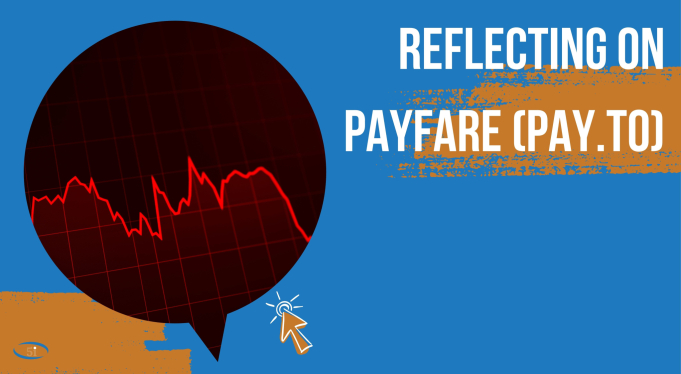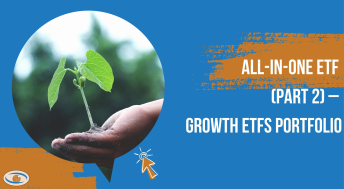While we often talk about the immense opportunity available in the Canadian small cap market, we try not to understate the risks. While growth upside may seem very attractive; volatility, liquidity, and concentration risks are all very prevalent and can be overlooked. We will take a look at Payfare (PAY.TO) a stock that has recently dropped more than 75% in one day to highlight these risks.
About Payfare (PAY.TO)
PAY.TO is a Canadian fintech company that provides earned wage access (EWA) to gig economy workers. A gig economy worker is a contractor, freelancer, or flexible/temporary employee (Ex. food delivery driver and Uber drivers). Through PAY’s digital banking platform, it helps these workers get instant access to their money. Earnings are paid out instantly through a free digital bank account powered by PAY. This was a very strong value add where the traditional direct deposit system would take a few days for money to reach these workers accounts, and for many gig-employees that delay would be troublesome (Ex. Uber drivers needing to pay gas expenses after a day of rides). The business model made plenty of sense and PAY had contracts with blue-chip customers and the biggest employers of gig-workers including Uber, DoorDash, and Lyft.
From a fundamental standpoint, PAY looked like a very attractive high-growth small cap. We have highlighted some of the fundamentals in the chart below:
We can see that revenue growth was strong at nearly 30% over the last twelve months, paired with margin expansion, positive income and cash generation. The fundamental picture was quite positive for PAY and prior to its big drop it was cheap, trading at 11x forward earnings. It had appeared to have a rare combination of high growth and a cheap valuation, but we can see the massive drop in price that occurred on September 27th:
PAY’s stock had one of the largest single-day declines we have ever seen, losing 75% in on September 27th, closing at $2.05. This was driven by news that DoorDash would not be renewing its contract with PAY. Further details came to light where DoorDash accounted for over 50% of PAY’s total revenue. This created a material change and the outlook for PAY is much less attractive now. The company has entered into a strategic review process where they will review strategic alternatives including a sale.
What Went Wrong
From an investor standpoint, we will say that these types of news events are nearly impossible to predict. What we will highlight are some of the previous risks that PAY’s business model had presented before this drop:
- Concentration Risk- PAY was evidently overly reliant on its DoorDash contract. This was actually a risk that had been identified in the company filings. In its second quarter MD&A filing under the Liquidity and Consumer Concentration risk section, PAY notes, “Customer concentration risk is the risk whereby the Company’s ongoing business is materially dependent on one or a small number of clients. At present, the Company is largely economically dependent on its payment services agreement with DoorDash. A loss or non-renewal of this payment service agreement would have a significant financial impact on the Company. The Company is mitigating the counterparty risk by initiating business diversification strategies and the implementation of new customer prefunded instant payment solution programs and services.”
- Replicability- While Fintech can be an exciting space it has been highly penetrated as barriers to entry are quite low. We thought a plausible risk was some of PAY’s large customers developing their own solutions in house, or other competitors entering the space and saturating the market.
Other general small risks that PAY has presented include:
- Volatility - PAY has a beta of 1.80 which is high. High betas and volatility are quite common for small cap companies as high-volume trading days can result in big swings irrespective of any firm specific news.
- Size & Liquidity Risks - PAY’s market cap peaked back in 2021 a few months after it had IPO’d reaching $603 million. Prior to its drop at the end of September, the company’s market cap was $401 million. These smaller types of companies can have wider bid-ask spreads where it can become hard to sell larger positions.
- Limited Track Record - PAY has only been public since 2021. Investing in newer listings can add risk as management may not have experience working in public markets. Earlier on in the year, PAY’s stock had taken a hit due to vendor issues and delays in the company’s annual filings. While this may not have been anyone’s fault internally, it reflects badly in the eye of the public markets.
Conclusion
Reflecting on losers and asking “What went wrong” may be a burdensome task but it can be a key contributing factor to becoming a better investor. It is not always easy to poke holes and find the risks in small cap companies demonstrating high growth, with PAY being a prime example. In hindsight, some of the risks related to PAY seem more obvious than they were before the loss of the DoorDash contract. It is nonetheless a good lesson on the higher risks involved in small cap investing and the increased degree of diligence required. It is never good to see a promising Canadian company get struck down as PAY has and we still think the company has a decent business. However, the near-term fundamental impact will be highly negative, and it may be a long road to recovery. As investors, everyone has a losing stock from time to time, and no one has a perfect track record, but sometimes the best course of action is simply moving on to greener pastures and focusing on the immense list of future opportunities that can help investors overcome losses.
Unlock the Power of Informed Investing with 5i Research!
DIY investing doesn't have to mean going it alone. At 5i Research, we're your trusted partner in navigating the stock market. Our platform offers comprehensive stock and market research, empowering you to make smart investment decisions.
- Investor Q&A: Have burning questions? Get answers from our team of experts and fellow investors in our dedicated Q&A section.
- Research Reports: With over 60 meticulously researched Canadian stocks, our reports offer in-depth analysis, giving you the confidence to invest wisely.
- Model Portfolios, Alerts, Forums, Portfolio Tracking, and Much More...
Take Care,






Comments
Login to post a comment.